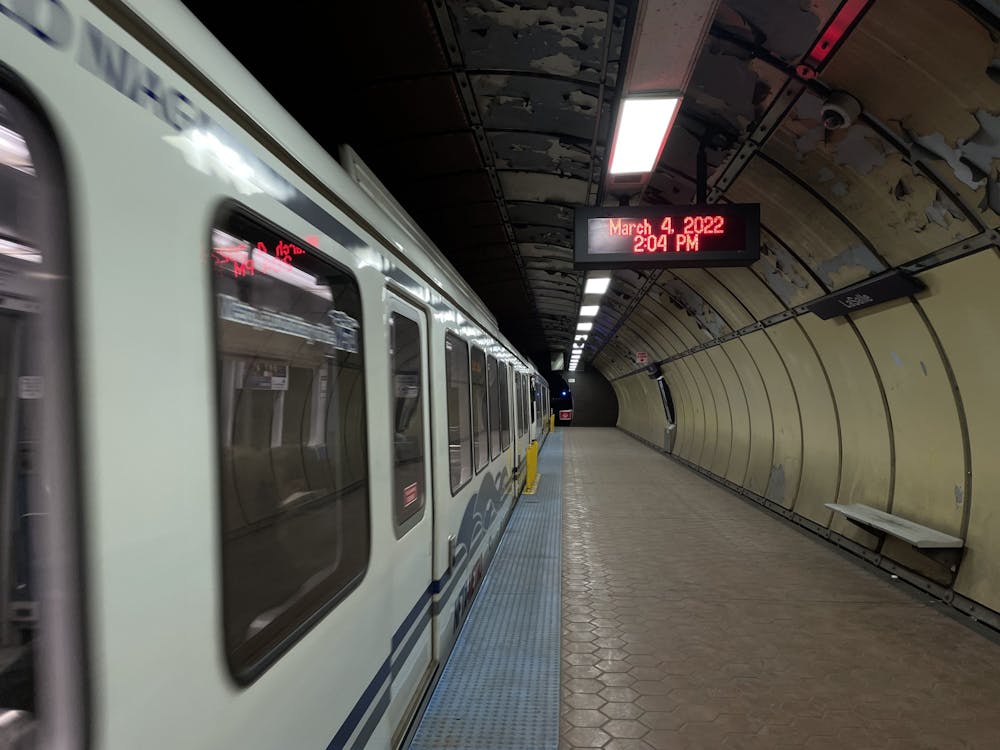Four years after announcing plans to study whether a metro expansion to UB’s North Campus would be feasible, a project manager for Niagara Frontier Transit Authority says the organization is planning to release a draft environmental impact statement this fall.
Jeffery Amplement, the planning project manager for the study and expansion, says the scoping process for the project is complete and residents can expect an update in the fall. The planned expansion would add 10 additional stops and run through Tonawanda, Amherst and UB’s North Campus, according to Amplement. Three of the 10 stations would be on North Campus, with stops at Lee Loop, Flint Loop and Ellicott Complex. The proposed plan has evolved to include a bus rapid-transit system — which includes a bus lane and extended bus cabs.
Major projects proposed by federal agencies must abide by the National Environmental Policy Review Act, which intends to minimize negative environmental and human impacts. New York State has a similar law — the State Environmental Quality Review Act — that must also be met. The requirement to meet criteria designated from two different governing bodies is partially why it has taken the NFTA several years to get started on the project, according to Amplement.
In order to receive federal funding, the NFTA has had to defer “lead agency” status to the Federal Transit Authority, which will oversee the expansion and ensure the project meets NEPA requirements..
The project was initially projected to cost $1.2 billion, but Amplement says the project will ultimately cost more.
“It’s going to be more than $1.2 billion,” Amplement said. “But I think the details of [finances] will be flushed out during the design process. [Design] really refines costs and infrastructure elements that will go into the project. So, over the next couple of years we’ll really zero down into what the eventual costs will be.”
The FTA has recommended that the NFTA consider implementing a bus rapid-transit system in addition to the original proposed metro expansion, also known as the light-rail transit system. The bus and metro lines are expected to run on similar routes.
Currently, UB has several NFTA bus routes that service North and South Campus to the surrounding areas. Students can also ride the metro by taking the free UB Stampede bus to South Campus.
The draft statement will be open for additional comments, concerns and scrutiny beginning in the fall, Amplement says. If all goes to plan, these comments will be further addressed in a revision of the impact statement and the Record of Decision will be released in spring 2023.
Amplement says the design process for the metro and bus systems will begin at the conclusion of the environmental review process in spring 2023.
The new metro and bus systems are expected to run on Niagara Falls Boulevard before heading to North Campus and are expected to make the boulevard more walkable, a bonus for students without cars.
“The project does include a number of pedestrian and multimodal enhancements, which would include bike lanes and crosswalk enhancements,” Amplement said.
Amplement expects the entire project to be completed by 2030, budgeting three years for the design process, starting in 2023, and another five or six years after the design phase for construction.
Amplement thinks the project will positively benefit the UB community and its surrounding neighborhoods.
“On LRT [the metro] system, UB students would have a one-seat ride connection between all three UB campuses,” Amplement said. “And now we cannot only connect them to the [three] campuses, but all the economic generators throughout that corridor. All the employment opportunities and getting downtown to the entertainment district as well — I think that’s very attractive to the UB community.”
Julie Frey is a senior news/features editor and can be reached at julie.frey@ubspectrum.com

Julie Frey is a senior news/features editor at The Spectrum. She is a political science and environmental studies double major. She enjoys theorizing about Taylor Swift, the color yellow and reading books that make her cry. She can be found on Twitter @juliannefrey.





